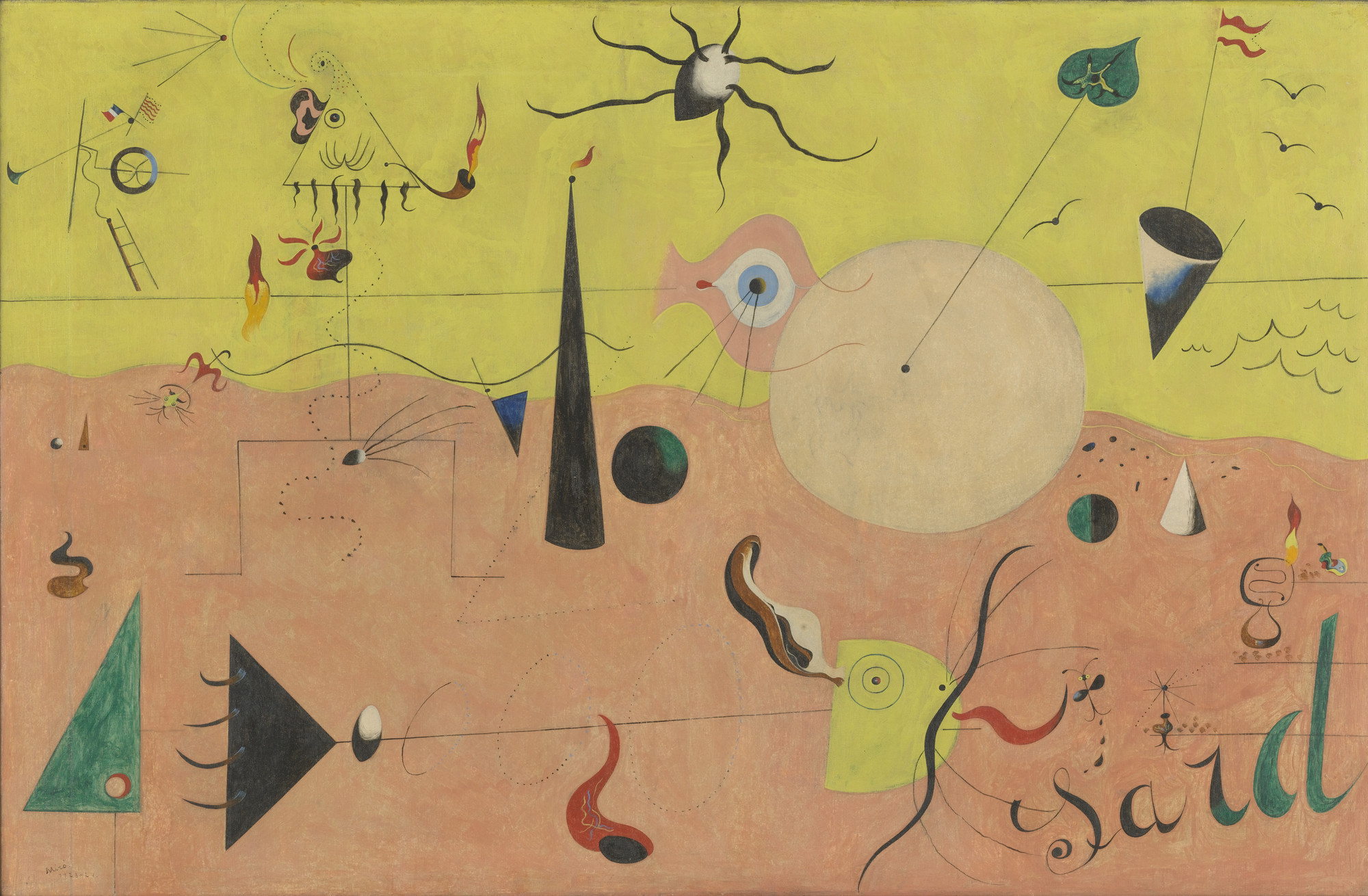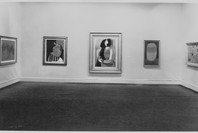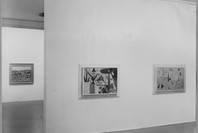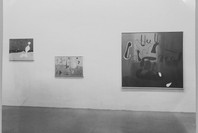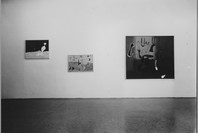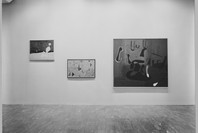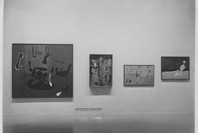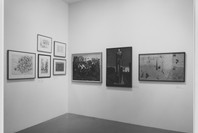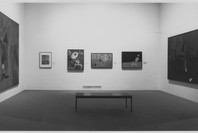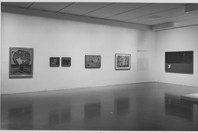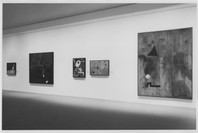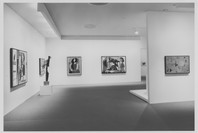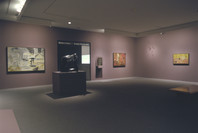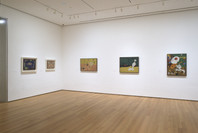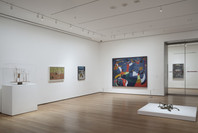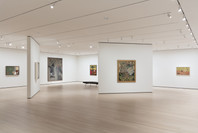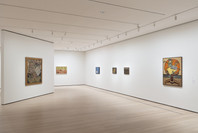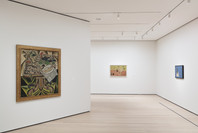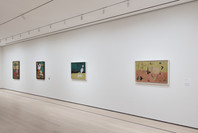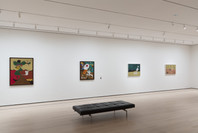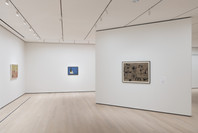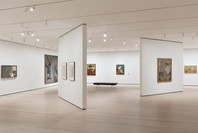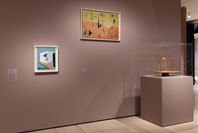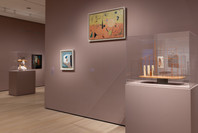Joan Miró’s The Hunter (Catalan Landscape) may seem abstract, but a closer look reveals a landscape populated with a rich assortment of human and animal figures and natural forms that together comprise an iconography of the artist’s life. The hunter, standing at the left side of the composition, has a stick figure body and a triangular head. A pipe protrudes just to the right of his bushy mustache, and his heart floats near his chest. In one hand he holds a freshly killed rabbit, in the other, a gun still smoking from the kill. This hunter figure is a stand-in for Miró, and it appears in many of his other works.
Miró’s landscape evokes life on his family’s farm in Montroig, Catalonia, Spain. A politically autonomous region near Spain’s border with France, Catalonia maintains its own parliament, language, history, and culture. Catalan nationalism has been a subject of debate for more than a century. Perhaps hinting at this contentious history, Miró depicts the French, Catalan, and Spanish flags in the background. In the foreground, he writes the word “sard,” short for “Sardana,” Catalonia’s national dance. This truncated word also references the fragmented letters and words of the Dadaist and Surrealist poetry by which he was influenced.
In 1923, Miró moved from Montroig to Paris. The move meant a transition from painting directly from nature to working indoors, in a studio. A few years later, he explained the impact this location change had on his work: “I have managed to escape into the absolute nature, and my landscapes have nothing in common anymore with outside reality….”
